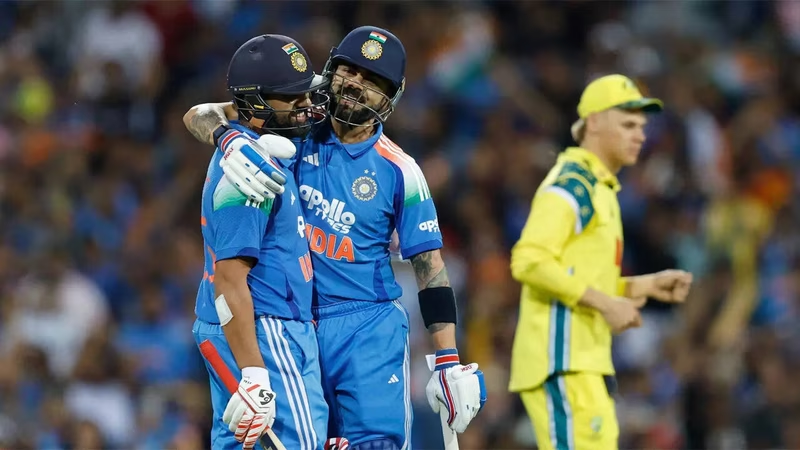Table of Contents
- The Legendary Duo’s New Chapter
- Gill’s Strategy for Peak Performance
- Why This Management Plan is Crucial
- What’s Next for Team India?
- Sources
The Legendary Duo’s New Chapter
In the ever-evolving landscape of international cricket, the transition of legends is a delicate dance. For Team India, that dance now centers on two titans: Rohit Sharma and Virat Kohli. Having stepped away from Test and T20I cricket, they’ve chosen to focus their immense talent on the 50-over format. This strategic shift places a new responsibility on the shoulders of their young captain, Shubman Gill.
Following their recent, match-winning performances against Australia, Gill was effusive in his praise, calling their clinical chase a “treat to watch” and a “great bonus” for the team . Their technical mastery and ice-cool finishing ability remain as potent as ever, proving that experience can be a team’s most valuable asset.
Gill’s Strategy for Peak Performance
But how do you keep two of the game’s greatest players sharp when they’re only competing in a single format? This is the central question Shubman Gill is now tasked with answering. The young skipper has been clear: careful management is non-negotiable .
The core of Gill’s plan revolves around ensuring consistent game time. Without the regular fixtures of a multi-format schedule, the risk of rust is real. Gill and the team management are actively exploring avenues to provide Sharma and Kohli with competitive cricket outside of international series. This could involve a return to domestic tournaments like the Vijay Hazare Trophy, a move that would offer them the perfect platform to maintain their rhythm and match fitness .
“A decision on how Rohit Sharma and Virat Kohli will maintain rhythm now that they play only ODIs will be a collective one,” Gill revealed, indicating that the team’s coaching staff and selectors are all on the same page .
Key Elements of the Management Plan
| Focus Area | Strategy | Expected Outcome |
|---|---|---|
| Game Time | Potential participation in domestic leagues (e.g., Vijay Hazare Trophy) | Maintain match sharpness and timing |
| Workload | Strategic rest during bilateral series; focus on major ICC events | Prevent burnout and ensure peak performance for key tournaments |
| Team Integration | Leverage their experience as on-field mentors for younger players | Strengthen team culture and tactical depth |
Why This Management Plan is Crucial
The stakes couldn’t be higher. With the next ICC Cricket World Cup on the horizon, India’s campaign will heavily rely on the firepower and composure of its two most experienced batters. Their ability to chase down targets under pressure, as recently demonstrated, is a unique skill set that can’t be easily replicated.
Gill’s approach is a masterclass in modern captaincy—balancing respect for legacy with the pragmatic needs of a winning team. By proactively managing their workload and ensuring they stay in the groove, he’s not just preserving their individual brilliance; he’s safeguarding India’s chances at global glory. Their continued success is a “great bonus” for the squad, but with smart management, it can become a reliable cornerstone .
What’s Next for Team India?
The cricketing world will be watching closely to see how this unique dynamic unfolds. Will we see Rohit and Virat donning their state colors in domestic cricket? How will their roles evolve within the team structure? One thing is certain: under Shubman Gill’s thoughtful leadership, the twilight of their ODI careers is being handled with the care and strategy it deserves. As Gill himself has made clear, their future in the format will be decided with a long-term vision in mind .
